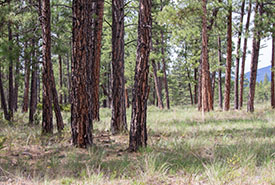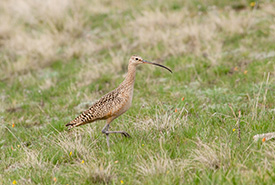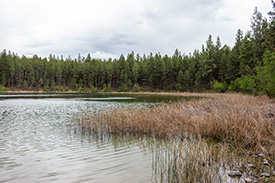Skookumchuck Prairie

Skookumchuck Prairie, BC (Photo by NCC)
Located in the wide, flat valley bottom of the Rocky Mountain Trench north of Cranbrook, Skookumchuck Prairie encapsulates the diverse, dry ecosystems characteristic of the region.
Grasslands with waving wildflowers are punctuated by wetlands and sparse stands of ponderosa pine and Douglas-fir, which each support species at risk. This land has also been recognized for its valuable breeding habitats for two at-risk bird species.
Skookumchuck Prairie is part of a Key Biodiversity Area for long-billed curlews and is adjacent to three Provincial Wildlife Habitat Areas, which are important for Lewis’s woodpecker.
Here, the federally threatened Lewis’s woodpecker nest in cavities within large dying and dead Ponderosa Pine trees or snags. Urban and agricultural development and removal of standing dead trees has greatly reduced habitat for these woodpeckers and other cavity-nesting animals.

Long-billed curlew. (Photo by Brendan Matthews)
Long-billed curlew, listed as special concern, forage and breed amongst the bunchgrasses in the open grasslands. Each spring, the large shorebirds migrate from the west coast to the dry interior to breed. Preferring areas with short grasses, curlews shovel out a depression in the ground in which to lay their eggs. These birds have also lost habitat due to development and are especially impacted by cattle that are allowed to graze in the grasslands during their nesting period.
These grasslands also host endangered American badger who burrow and hunt for Columbia ground squirrel in the open prairie. Elk and mule deer find excellent winter foraging habitat here, and at-risk western painted turtles can be seen basking on logs in the wetlands in the warmer months.

A wetland at Skookumchuck Prairie. (Photo by Jolene Rudisuela / NCC)
This landscape has been maintained by a history of fire – both through natural causes and cultural burning. These frequent low-intensity fires help maintain the vigor of the grasslands and sparse forests by stopping encroaching trees and shrubs.
Sustainable cattle grazing can have a similar effect to fire. Low-impact cattle grazing has been taking place at Skookumchuck Prairie for years.
NCC has a long history of collaborating with conservation-minded ranchers. NCC’s work with ranchers at Thunder Hill Ranch ultimately led to the opportunity to conserve the nearby Skookumchuck Prairie.
Partners in conservation
This project was funded in part by the Government of Canada through the Natural Heritage Conservation Program, part of Canada’s Nature Fund. Private donors also contributed to this project, including the Rosenfeld Family Fund.




